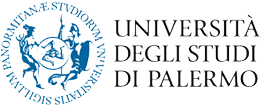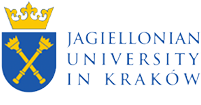The Documentary Writings of Law: Legal Texts and Practical Writings (11th-14th Centuries)
This chapter explores the interaction between learned law (droit savant) and practical writings in medieval Europe, analyzing their evolution and integration between the 11th and 14th centuries. It highlights the mutual influence between theoretical legal traditions and practical administrative documents, focusing on their role in institutionalizing medieval governance and creating a ius proprium.
Deux branches d’une grammaire documentaire du pouvoir médiéval
(Two Branches of a Documentary Grammar of Medieval Power)
The chapter begins by distinguishing between two categories of legal writings:
- Learned Legal Texts: These include canonical collections, Roman law compilations, and jurists’ doctrinal literature. They shaped theoretical norms and legal principles.
- Practical Writings: Documents like charters, cartularies, statutes, and customary laws, used for local or regional governance, which also contributed to creating legal norms.
By the 11th century, Roman concepts of contracts (carta) persisted in Southern Europe but remained underdeveloped in terms of legal precision. The transformation in writing practices, driven by the Gregorian Reform and the reception of civil law in universities, blurred the lines between these two categories. The written word evolved from a simple memory aid to an authoritative instrument for managing legal and social relations.
La diffusion du droit savant dans les documents de la pratique
(The Spread of Learned Law in Practical Documents)
From the 12th century onward, learned law increasingly influenced practical writings. The rediscovery of Justinian’s Corpus iuris civilis and canon law fostered a juridical culture that permeated administrative practices:
- Terminology and Principles: Roman and canonical terminology appeared in legal documents like charters and statutes.
- Local Adaptations: Urban communities and political authorities integrated learned law concepts into statutes and customs. For example, in Rouergue, Roman law principles were used to define justice and equity in legal disputes.
Le recours au droit savant dans les statuts et coutumes
(Learned Law in Statutes and Customs)
Statutes and customs became key instruments for consolidating local governance:
- Statutory Examples: Urban statutes from cities like Toulouse, Montpellier, and Siena reflected Roman legal concepts, particularly in economic and procedural regulations.
- Flexibility and Localization: Statutes incorporated Roman legal solutions into local customary frameworks, resulting in a dynamic and adaptive legal tradition.
La compilatio des textes juridiques et des écrits pratiques
(The Compilation of Legal and Practical Texts)
Medieval scribes employed the art of compilation (compilatio), merging legal texts and practical documents into cohesive codices. This practice bridged the gap between learned law and administrative needs:
- Separate Volumes: Institutions often produced separate manuscripts for doctrinal texts and practical writings, reflecting their complementary roles.
- Hybrid Codices: In some cases, both types of texts were integrated into a single codex, as seen in the Roman curia’s cartularies during the Gregorian Reform.
Conclusion
The chapter concludes by emphasizing the interdependence of learned law and practical writings in shaping the ius proprium of medieval institutions. Through terminological diffusion, local adaptations, and documentary innovations, medieval scribes and jurists developed a unified legal culture that balanced tradition with administrative pragmatism. The compilatio exemplified the creative integration of diverse legal sources, ensuring the longevity of these traditions in medieval governance.






